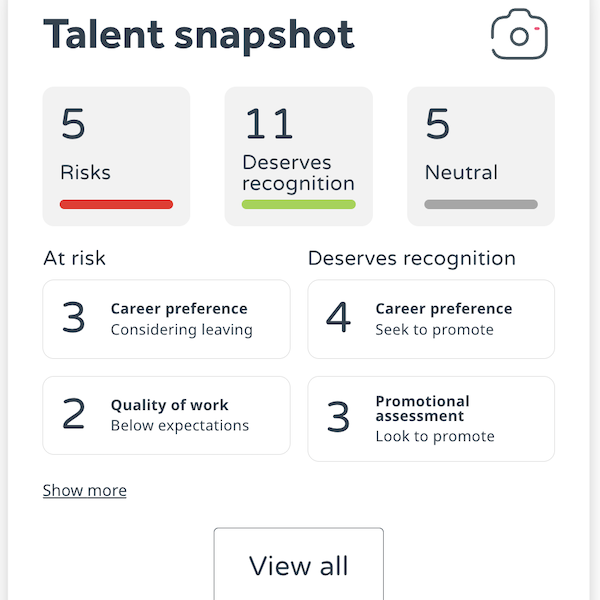
If you’re considering running an employee engagement survey or looking for ways to improve your existing employee feedback program, one of the first questions you’ll have is how frequently to run the survey for optimum results.
Historically, if they decided to listen to their staff, most companies used to commission a grand staff survey every two years or so. However, in the last few years two things have happened in tandem to influence a change in the way organisations approach staff surveys:
1) We have become aware how useful it is to understand staff sentiment
2) Technology has provided the means to survey more effectively
The result has been a general move to surveying more often, with at least annual employee surveys becoming the norm, and some organisations seeking frequent employee feedback with surveys sent to staff on a weekly or even daily basis.
So, what is the ideal employee survey frequency?
A three-four month interval gives you time to do the whole learning cycle properly: learn using a survey, thank the staff, plan, do the work, give it time to bed in, tweak as needed, then start again.
Although, it does depend on what you have been doing before. For example, it doesn’t make sense to start with a quarterly survey schedule if the staff are not used to it, are already pushed for time and have no sense of what value the exercise would bring them.
Employee engagement surveys best practice
Starting from scratch, it would usually be best to start with a one-off employee engagement survey, taking time to explain carefully to staff, line managers and the board what you are doing, why, how it will work and what benefits should flow from it.
Survey launch
Identify your audiences, possibly to include managers and employees, and customise your strategy and message to match each segment. Think how best to tap into each audience’s motivation to take part in and support the survey.
Create a buzz around the communication of the employee engagement survey with a company-wide announcement that outlines the survey process which includes:
- Who is eligible to take part in the survey
- Survey open and close dates
- How the survey will be shared
- What the survey is measuring
- Who will be looking at the survey results
Measuring employee engagement
In deciding how to run your employee engagement survey, you essentially have two options.
1. Write your own survey
You can write your own survey questions, which can work OK if you are seeking very specific feedback about a particular policy or topic. But, be wary of your own bias. Your goal is to get honest feedback from your employees. Be aware of how you are phrasing your questions, and that you’re not affecting the answers you receive.
Using paper surveys tends to slow down the process so it’s advisable to stick to computer-based surveys.
2. Use an employee engagement survey software tool
With tech-loving millennials now making up around 50% of the workforce, it makes sense to use software wherever possible!
It’s normally better to use a survey built by experts to guarantee impartiality.
WeThrive’s own employee engagement survey software was designed to uncover how your employees truly feel and identifies underlying issues or successes within the workplace. It is the perfect ‘first-step’ into the world of employee engagement surveys for a newbie and also great for the more experienced HR professional in larger organisations that requires more advanced features.
Employee engagement survey length
While there is no ideal length of your survey, the key is to find a balance between asking enough questions to be thorough, and not asking so many questions that staff get bored. In general, 30-60 questions is a good number for an employee survey, but they must be the right questions.
Employee feedback
The most crucial work has to be done with the line managers, getting them into a position to follow up diligently on all the things that emerge from the survey so that their teams have a less frustrating and more satisfying experience of work.
The most typical reason people don’t want to fill out your staff engagement survey is because you haven’t done anything since the last one.
If the staff feedback is done well, and staff get a genuine benefit from taking part in the survey, they will be more eager to participate next time, both in the survey and any subsequent work. The result will be higher employee engagement with future surveys – it is common to see a 10% increase in participation following a well-conducted survey cycle – with more information gained from each staff member and increasing levels of trust with the staff.
Learn from survey findings
Safe, sustainable organisational change takes time. Time to ask the questions, consider the answers, collaborate in constructing new solutions, see them implemented and bed in, and so on. This is one of the main reasons (the other being survey fatigue) why WeThrive recommends a learning cycle of three to four months.
What about employee pulse surveys?
Employee pulse survey frequency is often monthly or weekly. These are shorter, regular employee opinion surveys, typically 10-15 questions and should take no longer than a few minutes to complete. A pulse survey is best used to follow up and track progress from your baseline engagement survey findings. The pulse survey acts to build engaged employees as staff are reminded of what actions are being taken.
Always-on, pulse surveys are going to generate interesting results that reflect short term changes in the employee experience, but change of any importance is a longer-term process, especially in larger companies.
Is a staff satisfaction survey the same as an employee engagement survey?
While the terms “employee engagement” and “employee satisfaction” may sound like the same thing, they are actually quite different. An employee can be satisfied with a job without being engaged in the job.
Employee job satisfaction is being content with their salary and ability to work from home, whilst employee engagement is when someone is deeply involved and invested in their work. Employee engagement leads to reduced staff turnover, higher productivity and an enjoyable company culture.
Measuring employee satisfaction is no less important, but not to be confused with employee engagement.
When measuring employee engagement, make sure you remove employee benefits-related factors from the equation. Engagement focused questions could be whether staff find their job meaningful, if they feel they get support from their manager and if they have a clear grasp of how their roles contribute to the overall success of the business.
The ideal employee engagement process
Each organisation finds its own way to schedule its listening activities. Some do an annual benchmark survey and then deploy tactical surveys in areas where there is stress, low performance, a flurry of resignations or other significant change. A new project team coming together would be worth surveying to find out who is integrating well and who needs support, for example, or a newly acquired business. Other companies settle on a learning cycle that lasts three or four months, and this is our usual recommendation.
What next?
Why not check out employee engagement survey guide or book a demo and see how WeThrive makes running surveys a piece of cake?

